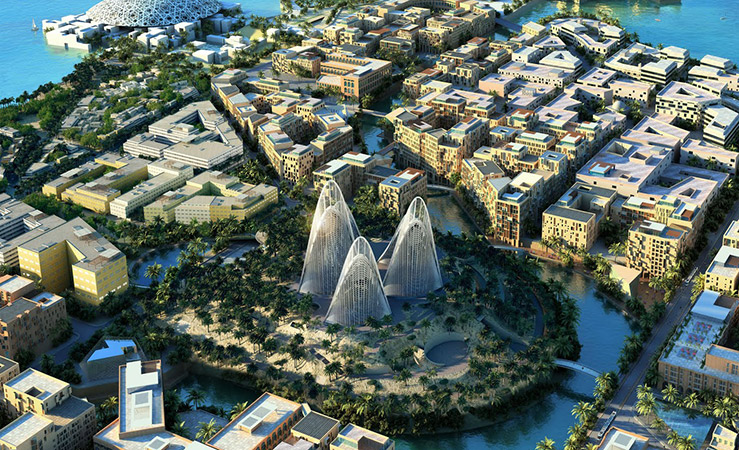SIGHTSEEING BRNO
 The main architectural sights of Brno are located in the historic center of the city.
The main architectural sights of Brno are located in the historic center of the city.
The central part of the city, which is a pedestrian zone, is surrounded by a ring of boulevards created in the 1860s on the site of demolished fortress walls, hereinafter – industrial and residential
development of the XIX and XX centuries.
Outside the city center, there is a zoo, a botanical garden, extensive gardens, and for motorcycle enthusiasts the Brno Circuit circuit, where the Moto GP World Cup is held.
Cathedral of St. Peter and Paul
The Cathedral of St. Peter and Paul (Katedrála svatého Petra a Pavla) is the main attraction of Brno. Built in the 14th century in the Gothic style on the site of the previous church, the cathedral was repeatedly rebuilt – including in the Baroque style. It acquired its present appearance after reconstruction at the turn of the 19th and 20th centuries, when a neo-Gothic appearance was betrayed to it. In 1777, the cathedral became the seat of the Brno bishopric. The cathedral is famous for its watches, which strike at noon at 11 o’clock – in memory of the events of 1645, when the bell ringer saved the city from destruction during the siege by the Swedes, ringing noon an hour earlier.
Church of the Assumption of the Virgin Mary
The pearl of Moravian Gothic architecture is the Ascension of the Virgin Mary (Bazilika Nanebevzetí Panny Marie) in Old Brno. In 1323, at the Church of the Virgin Mary, the royal widow Elishka Reychka founded the Cisterian monastery. He was called Aula Sanctae Mariae or the Queen’s Monastery. In 1782, the monastery passed to the Order of the Augustinians. The monks finish building the abbey complex and give the temple a baroque look. One of the most famous composers of the Czech lands, Leos Janacek, worked in the monastery, thanks to which the Church of the Virgin Mary was called the “Minor Basilica”.
In addition to these most famous temples in Brno, there are also such remarkable architectural monuments as the Church of St. Jakub (on the original Roman foundations a gothic temple of rare beauty was erected several times rebuilt in the following centuries), the Capucin Monastery (1651, with an underground laurel, where the monks and representatives of the local aristocracy are buried, there are the remains of Baron Trenka), the Dominican monastery with the church of St. Michael (the church of the 13th century was rebuilt in the 17th century in the Baroque style), the church of St. John (with painted ceilings, beautiful altarpieces and an ancient organ), St. Tomas Church (14th century, tomb of the Moravian Margraves).
The oldest secular building in Brno is the Old Town Hall, which until 1935 housed the city government. The historic core of the building with the tower arose already in 1240. In 1510, the entrance to the courtyard was cut in the tower, decorated with a stone portal with magnificent examples of late Gothic sculpture – Pilgram plastics (1510-11). On the left and right side of the portal are figures of squires carrying the coat of arms of Brno on the shields. To eliminate the damage caused to the building by the siege of the Swedish troops, the building of the town hall was reconstructed in 1660.
In addition, Brno has a huge number of interesting places worth visiting. Among them, the central and largest square of the city is Freedom Square, previously called the Lower Market, Dominican Square, Vegetable Market Square, and Capuchin Square. On the market square there is a theater – one of the oldest theater buildings in Central Europe (15th century) and the Moravian Museum in the Dietrichstein Palace (1760), which is of particular interest to the famous “Vestonice Venus” – the oldest ceramic product in the world – a figurine made of burnt clay, whose age is 25 thousand years. You can continue your boat trip along the beautiful Lake Brno among the picturesque mountain landscapes.
Spielberg Fortress in Brno
No less famous attractions of Brno are the Hrad Spilberk fortress, which performed a defensive function during the medieval wars, and in the 18th century became one of the darkest prisons in Austria-Hungary for political prisoners (existed until 1858).
Moravsky Kras in Brno
To the north of Brno is a unique attraction of the Czech Republic – the Moravian Kras (Moravský kras). A kind of rock structure, consisting of numerous caves (more than 400) and underground grottoes. Moreover, all this has long been cultivated and turned into a kind of Disneyland, you can walk through the caves both on foot and rafting along the underground river. In addition to stalactites, stalagmites and ice in the caves there are many bizarre stones that you can take with you as a keepsake.
City Slavkov u Brna (Austerlitz)
Not far from Brno is the city of Slavkov u Brna (Austerlitz), where on December 2, 1805 the famous Austerlitz battle took place – the “Battle of the Three Emperors” (Napoleon I, Alexander I, Francis I), which ended with the victory of Napoleon over the troops of Russia and Austria- Hungary.




